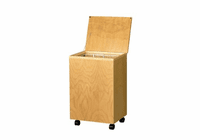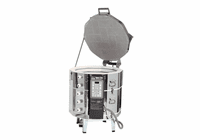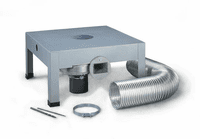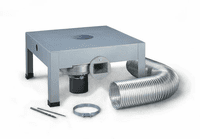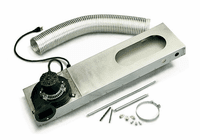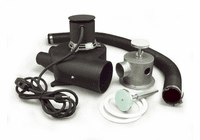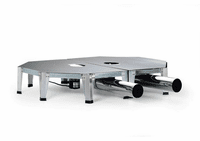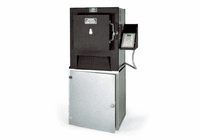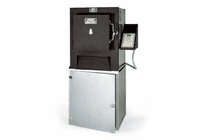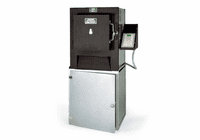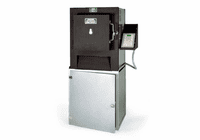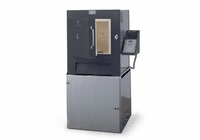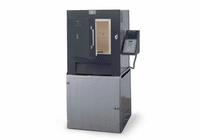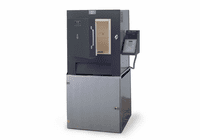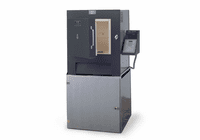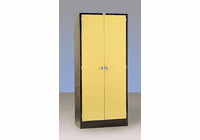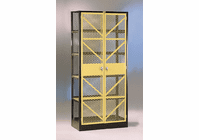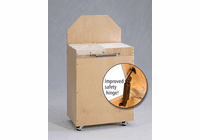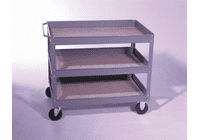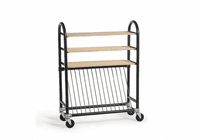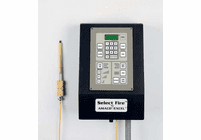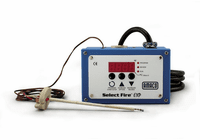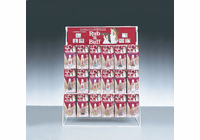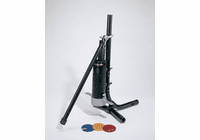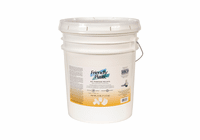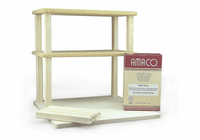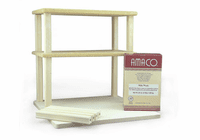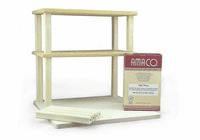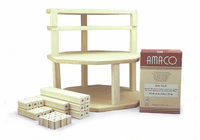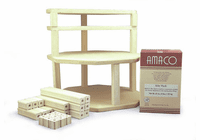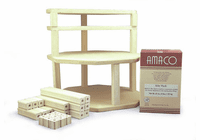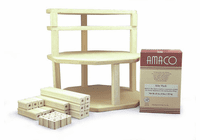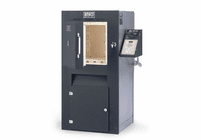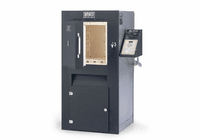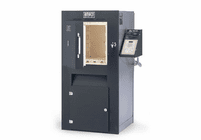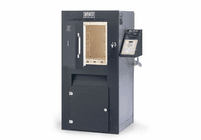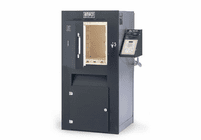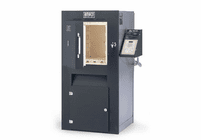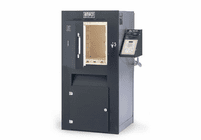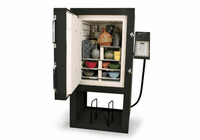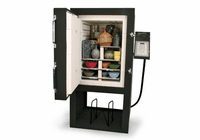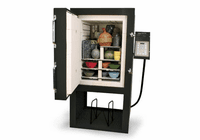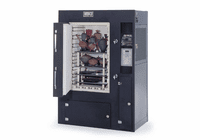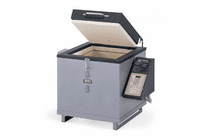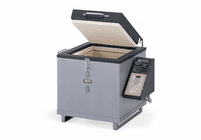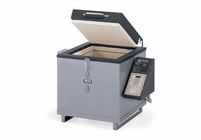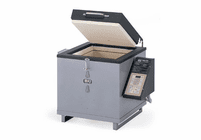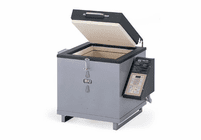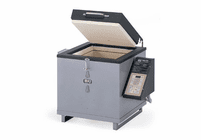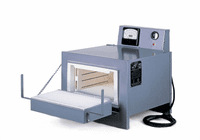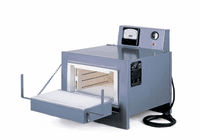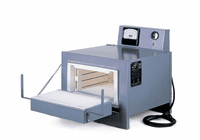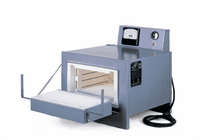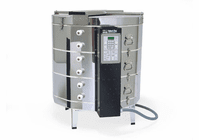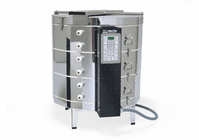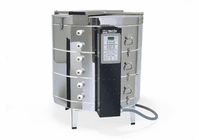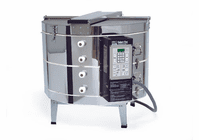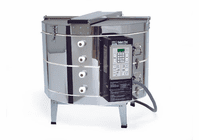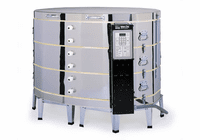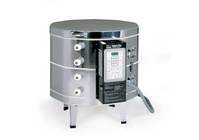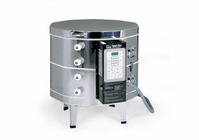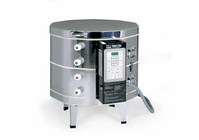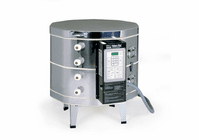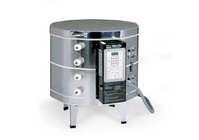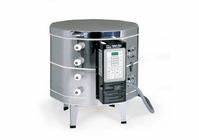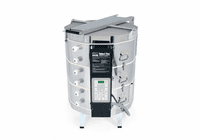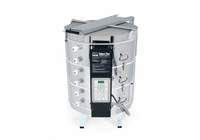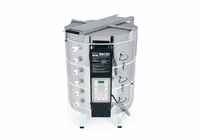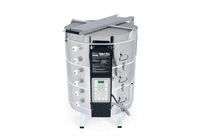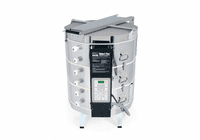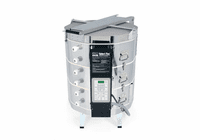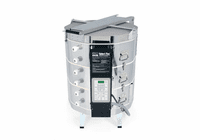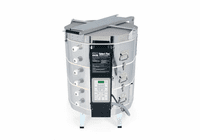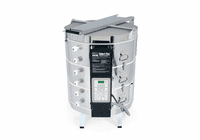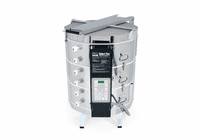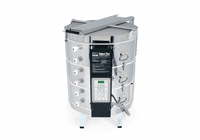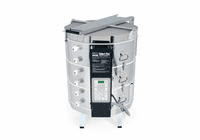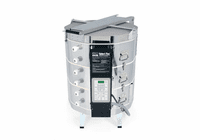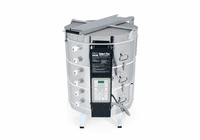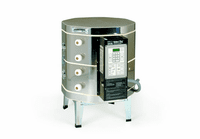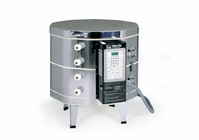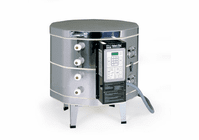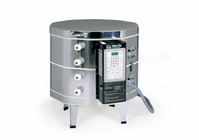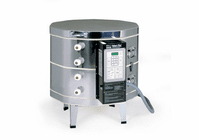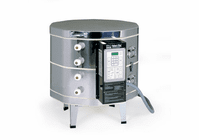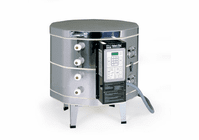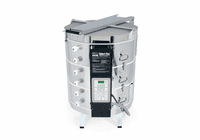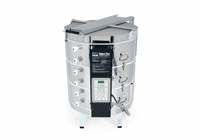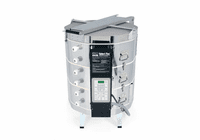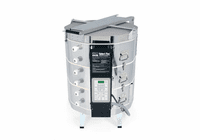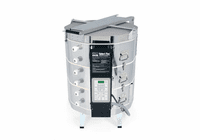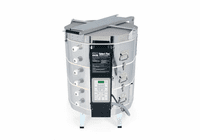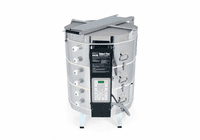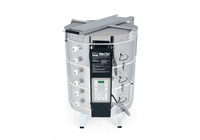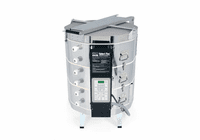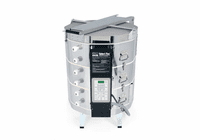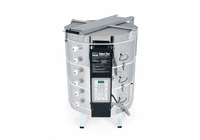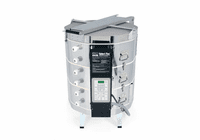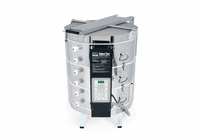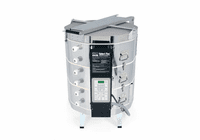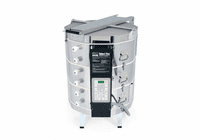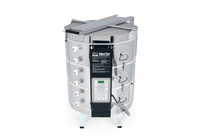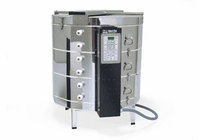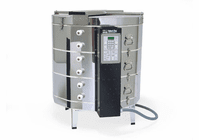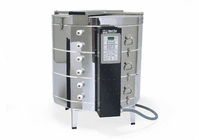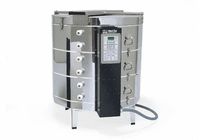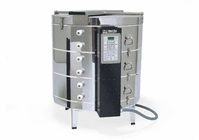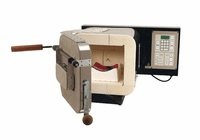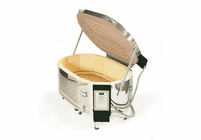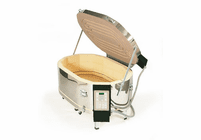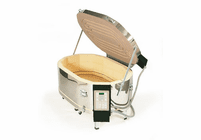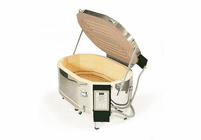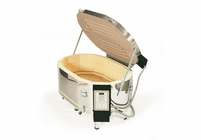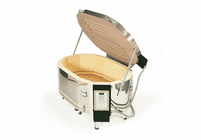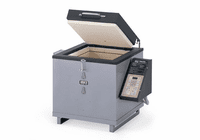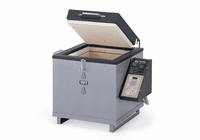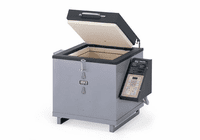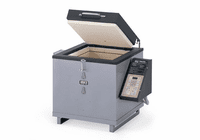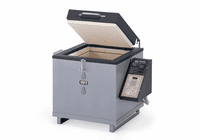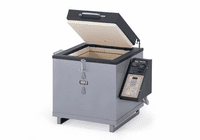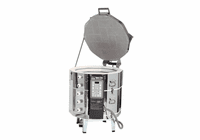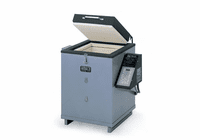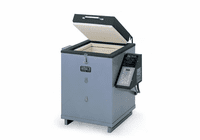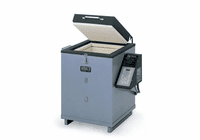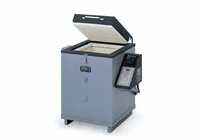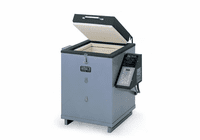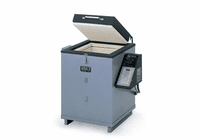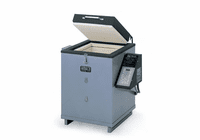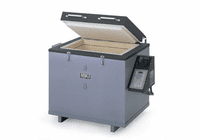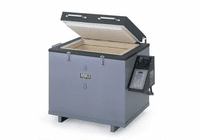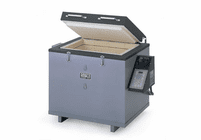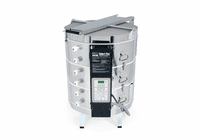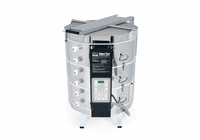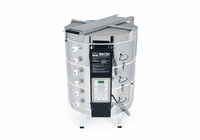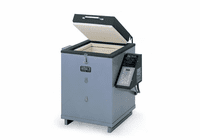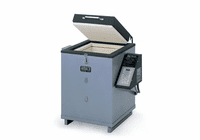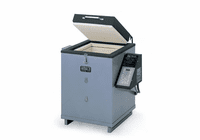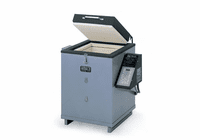Kilns
Kilns If you use a kiln to create pottery, fuse glass or enamel on copper, you may not realize that you are taking your place in history amongst a long line of artists and craftsmen. Kilns are one of humanity's oldest technologies, used to fire dishware as far back as pre-history. Early kilns were hearths used by people for cooking and heat, possibly for light. In some societies, simple hearth kilns are used even today.
Ceramics is one of the oldest art forms, used for sculptures of figures and animals as well as to create functional pottery for cooking and holding belongings. The Neolithic period is generally stated to be the period of time when the process of firing clay was discovered, over 3,000 years ago. Fired clay containers were used to store seeds, food and water for transportation from farms to market and back again. Clay was an easily obtained raw material to create pots and containers and firing it gave the containers a longer-lasting durability.
Kilns by Amaco and Tucker Kilns (Shipping lead-time: 3 - 4 weeks.)- Scroll down for More About Kilns -
Please note, Amaco has discontinued all models with sitter/timers. They have been replaced with Select fire models. However, we can still special order models with sitter-timers with a 4-6 week lead-time to ship.
Kiln Basics
Kilns are thermally heated ovens that are used for in the artistic production of ceramics, glass and more.Kilns work due to insulated space that holds in heat. While early kilns were not temperature controlled, modern kilns can hold specific temperatures for a specified length of time to achieve desired results. Kilns are used primarily in art and industry to harden, cure or dry materials at a constant high temperature. Firing requires fuel and oxygen to feed the thermal process.
The first kilns were fed by natural combustible materials such as wood, straw and peat. Later in history kiln technology progressed into more stable burning elements to create a more durable finish. This advancement allowed the development of new types of ceramics, better brick-making and other techniques. Current kilns use modern technology to create vacuum and hold in heat. Kilns are used in several industries including ceramics, brick-making, fusing and firing glass, glass-making, creating lime, processing cement and the manufacturing of natural fuels such as charcoal. Various fuels power kilns including electricity, propane, coal, natural gas, oil and wood.
Kiln History
Early kilns were a pit dug into the ground, heated with burning wood. Pots were loosely stacked inside the pit, while combustibles were placed all around the sides and top of the pottery to fire the kiln. After the fire burned down completely and the kiln cooled, the leftover ash was removed, the pottery cleaned and used. This type of firing did not add very much strength to clay pots and they were quite fragile. While kilns of this nature are easy to build, the results are porous and fragile pottery. Pieces commonly broke while firing.As archeologists uncover much of man's history, kilns are clearly one of the earliest developments. Primitive kilns were no more than a pit in the ground. However, they were common in human gathering places around the world. Ancient pottery shards are used to determine the age of human settlements and how cultures developed.
The next step in kiln development was to add baffles around the pottery to control air flow and/or a stocking space into which pottery could be placed and then removed to conserve heat. An example of this type of kiln is called a beehive kiln. In a beehive kiln, a chamber that contained the combustibles was underneath the brick-contained chamber that held the pottery. The creation of the arch led to this type of kiln development. Another addition was the use of a chimney or similar stack to improve air flow of a kiln which caused a better burn for longer times and higher temperatures. This development allowed for better control of the temperature with a damper that changed the size of the kiln opening for air restriction.
During the Roman occupation of the United Kingdom, kilns were used for the production of roof tiles. These kilns were set into the side of a hill to allow a fire to be lit at the bottom which would send heat up for more control. Called climbing kilns, these kilns had more space to fire a greater number of pots at one time.
During the fourth century, at the same time as the climbing kiln was used, the Chinese developed a similar technology to fire porcelain. Porcelain pottery was held to be extremely valuable to the Chinese who kept its production a secret. A similar kiln to the Chinese climbing kiln is the Japanese Anagama kiln. This type of kiln is the oldest type of Japanese kiln, used since the medieval period.
The Anagama kiln is a single-chamber kiln which originated in Korea. It is a technique used by pottery artists who prefer natural ash glazes. This kiln is constructed with one long firing space with smaller stacking chambers on one side, a firebox on one end and a flue on the other. Firing times can last up to several weeks depending on what is being fired. The firing process burns off water and other organic material which creates a variety of results. Each firing is a unique process with different results.
Another style of kiln used by the Japanese is the Noborigama kiln, developed about the seventeenth century. This development introduced the downdraft kiln in a multi-chamber setting. The kiln operates via a heat movement up and down through four chambers, firing one at time. The chambers offer a larger production scale and a sharing of heat amongst the chambers. With this technology a much greater number of pots could be fired together than through previously development methods. This kiln also gave glaze firing a new consistency.
Modern technology introduced new ways of fueling kilns in more efficient manners including using natural gas, propane and electricity. Electric kilns are efficient and do not burn up because the electrical elements radiate heat evenly through the kiln without the need for an airflow. Without a draft, the kiln does not burn up. However, even with the development of new technologies, many artists go back to the old styles of kilns to product varying effects.
Types of Kilns
Bottle Kiln
A coal-fired intermittent kiln, used to fire pottery. It is named for its cone shape.
Top-Hat Kiln
Used to fire pottery, this intermittent kiln has a slab with a box-shaped cover.
Electric Kiln
Developed in the 20th century for smaller spaces at schools and hobby centers, this kiln uses electric elements to heat the chamber and is extremely dependable.Car Kiln
This kiln is set on top of a rail-mounted cart for easier loading and unloading.
Gas and Propane Kilns
Modern kilns are used for industrial firing, often powered by propane or natural gas including pottery kilns. These kilns have computerized settings and controls to properly monitor the large and small-scale industrial firing.
Microwave-Assisted Kiln
These kilns are powered by a combination of gas or electricity and microwave energy to produce high-temperature ceramics.
Use of Kilns in Ceramics
Ceramics require high-temperature firing or curing in order to be produced properly. During ceramics firing, a chemical reaction causes the clay to alter into a finished state. When creating pottery, materials are formed, allowed to dry fully, and then fired in a ceramics kiln. Depending on the type of clay, the finished piece will have specific characteristics. Various techniques can affect the clay when firing including the composition of the clay, the preparation and the temperature and length of time fired. After the first firing, glazes can be added which necessitate a second firing.Firing clay changes a porous and weak material into a stronger, durable material through a process called sintering. Sintering turns the clay into a solid mass by heating the clay and partially melting the particles together. The finished material has reduced pores, denser particles and a harder composition. As the temperature of the kiln gets higher, it causes the clay to become denser. Earthenware, fired at 1800 degrees to 2100 degrees Fahrenheit, is a lighter type of clay material that must be glazed to seal it from moisture. Glaze fuses to the surface to form a solid surface, bright colors and lightweight material. Stoneware, a more dense type of clay, has a different connection to the glaze. With stoneware the glaze is fused to the clay on a cellular level becoming one with the clay. Fired at 2000 degrees Fahrenheit to 2300 degrees Fahrenheit, stoneware is a durable substance impervious to freezing and liquids. Stoneware is a higher-priced material due to longer firing time and higher fuel cost.
Use of Kilns for Glass
Kilns are also used in the manufacture of all types of glass. Electric kilns are preferred due to the stability of temperature needed to keep glass from cracking or breaking. Kilns fired glass for many glass-making techniques including enameling, fusing, blowing and annealing. Glass has qualities of a solid and a liquid depending on the temperature. This feature allows it to be heated for molding, fusing and shaping into a variety of functions. Glass is annealed to increase its hardness and reduce breakage.Enameling is a technique of fusing molten glass onto metal, copper, silver or gold. Powered glass is placed on the prepared metal, and then heated in a kiln to fuse it to the glass. Enameling can be separated by precious metal wire to form sections, a technique called cloisonné. Other artistic uses of glass that may include heating in a kiln are lampworking, stained glass, jewelry-making, glass blowing and adding decorative frit to other surfaces.
Use of Kilns in Cement and Brick Production
Brick Kilns
Kilns are also used in the production of many house-building materials such as brick, lime and cement. The first bricks were baked in the sun, however kiln fired bricks were heartier and more durable. The original kilns used in brick firing were likely the pit kilns. Bricks have been found in the archeological digs in Turkey and Israel from as far back as 7500 B.C.E. Fired bricks are believed to have been developed in the Middle East.Firing bricks allowed for better insulation from the heat and cold of the weather, as well as more permanent dwellings in harsh climates. They were much more durable than sun-baked mud bricks.
Lime Kilns
Lime kilns convert limestone to lime for use in mortar. Lime is a universal stabilizer for flooring and plastering. Lime was also used in agriculture after the advent of coal.
Cement Kilns
Cement originated in ancient Rome and Greece, made from the combination of lime and volcanic ash to form a hard surface. Cement remnants have been found in Roman buildings dating from over 2000 years ago, aqueducts and brick roads. Cement held up well to the heavy Roman war machine, troops of soldiers and vast trade.Circa 1885, the continuous firing kiln was developed for use in the cement industry. This kiln allowed for the production of the cement clinker. A shaft kiln, similar to a blast furnace, was built on a slant to allow time for the raw mix in the form of lumps and fuel to be added continuously from the top. The mix then sintered to drop from a hole in the bottom of the kiln. This kiln was later replaced by a rotary kiln which more efficiently produced cement by turning as it burned. Even today, rotary kilns account for over 95 percent of the world's manufacture of cement clinker.
Pyrometers and Pyrometric Cones
In order to properly monitor the use of a kiln, an artist needs to be able to determine the temperature inside. The measuring tool used for this purpose is called a pyrometer. The pyrometer can measure heat at extremely high temperatures. Pyrometers consist of a calibrated dial connected to wires that are inserted inside the kiln. When the kiln is heated, the wires produce an electrical current that registers the temperature reading on the dial. The tool is easy to use but not especially accurate.To help with accuracy, pyrometric cones are used. These cones are pyramids of molded glaze that melt at predetermined temperatures. When the temperature is achieved, the cone melts and bends allowing the user to visually ascertain the temperature in the kiln.
Artists often use both methods to check the temperature of their kiln since they provide information at varying points of the firing process. Some kilns have an automatic kiln sitter, which uses the pyrometric cones to automatically shut down the kiln. Electronic kilns may also have an electronic temperature gauge that is more accurate at judging temperature.


